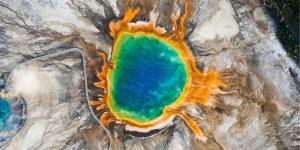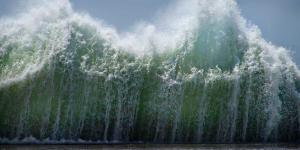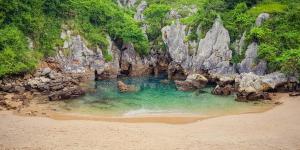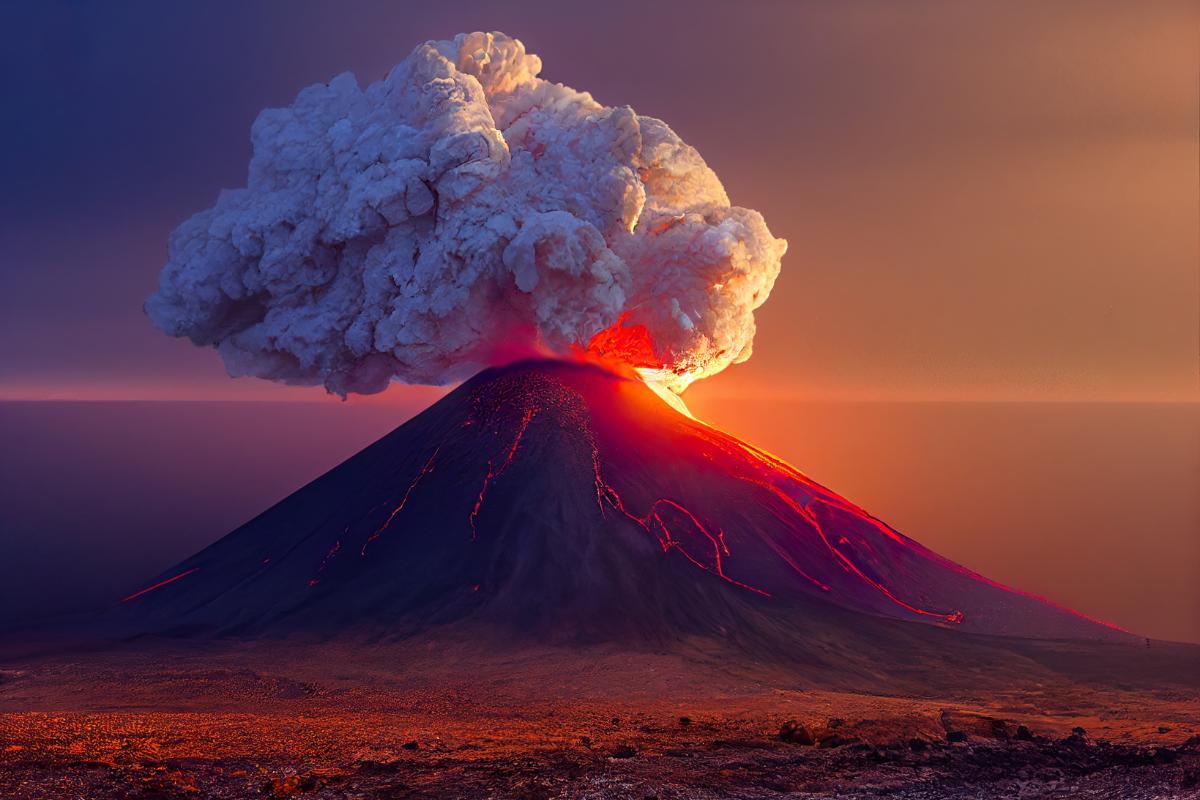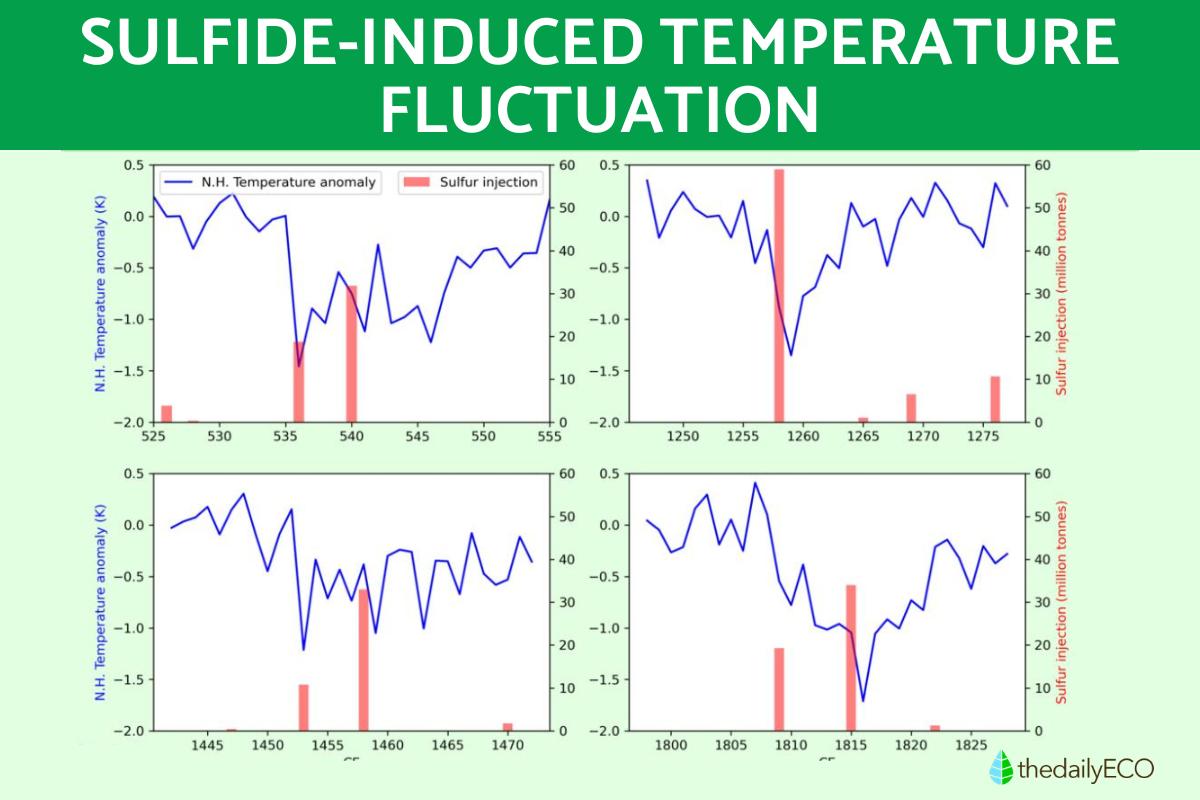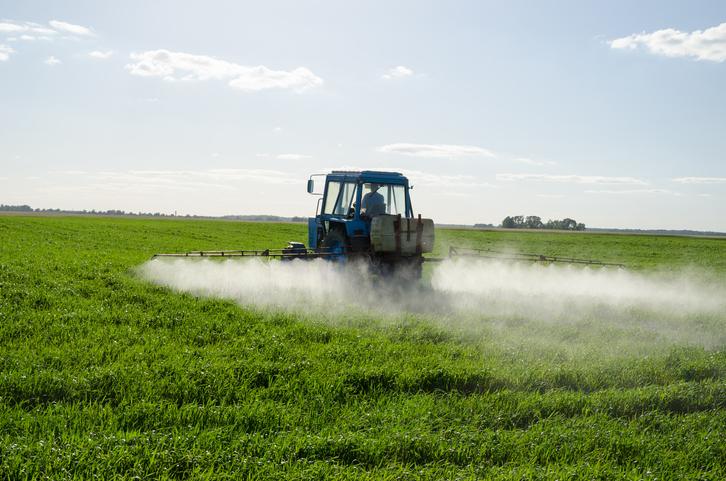What Happens in a Volcanic Winter?


Volcanic winters occur when powerful volcanic eruptions release massive amounts of ash and gases, primarily sulfur dioxide, into the atmosphere. These particles reflect sunlight, causing global cooling. This temporary climate disruption can last for months or even years, affecting weather patterns, agriculture, and living conditions worldwide.
In this article by thedailyECO, we'll delve into the causes, consequences, and historical examples of volcanic winters, exploring their impact on our planet.
What is volcanic winter?
Volcanic winter is an extreme climate phenomenon that occurs after a major volcanic eruption. The eruption releases massive amounts of ash and sulfur dioxide into the atmosphere, which can reflect sunlight back into space and cool the Earth's surface.
It is marked by significant and prolonged global cooling, which can drastically alter temperatures and weather patterns worldwide. During a volcanic winter, average global temperatures can drop notably, leading to harsher winters, shorter growing seasons, and reduced sunlight.
This cooling effect has profound consequences on both the environment and human society. Agricultural production can suffer due to lower temperatures and diminished sunlight, potentially leading to food shortages. Natural ecosystems may also be disrupted as plants and animals struggle to adapt to the cooler conditions. Historically, volcanic winters have been linked to famines, societal upheaval, and even the collapse of civilizations due to their severe impact on agriculture and daily life.
Ever wondered what leads to the dramatic eruptions that shape our world? Find out more in this related article.

How does a volcanic winter form?
Here's a breakdown of how a volcanic winter happens:
- A volcanic winter begins when a powerful explosive eruption ejects massive amounts of ash, gases, and particles into the atmosphere. These volcanic materials can reach the stratosphere and are carried around the globe by atmospheric currents.
- A key component in this process is sulfur dioxide (SO₂), which, upon reaching the stratosphere, reacts with water vapor to form sulfuric acid aerosols, which are tiny droplets that can remain in the stratosphere for years.
- These aerosols reflect a portion of incoming sunlight back into space, increasing the Earth's albedo. This reflection reduces the amount of sunlight and heat reaching the Earth's surface.
- The reduction in solar radiation leads to global cooling, with surface temperatures dropping across the planet. The cooling effect is not uniform, with some regions experiencing more severe temperature declines than others.
- The effects of a volcanic winter can last for months or even years. The particles remain suspended in the stratosphere, continuing to reflect sunlight and cool the planet until they eventually settle out of the atmosphere or dissipate.
Curious about the fiery aftermath of volcanic eruptions? Discover the fascinating details of lava flows in our related article.
Consequences of volcanic winter
Volcanic winter can have profound and often devastating effects on both global and local scales, influencing various aspects of life—from climate and ecosystems to economies and societies.
Impact on agriculture
One of the most immediate and severe consequences of a volcanic winter is its impact on agriculture. The reduction in sunlight and significant drop in temperatures can delay or completely inhibit crop growth, leading to reduced harvests. Historically, these conditions have been linked to widespread famines. You can explore more about this in our article on [food shortages: causes and solutions](link).
Climate and weather changes
The global cooling triggered by a volcanic winter disrupts normal weather patterns. This disruption can manifest in various ways, such as prolonged droughts in some areas and increased storms and heavy rainfall in others. Additionally, the release of sulfur dioxide during eruptions can lead to acid rain, which has detrimental effects on both terrestrial and aquatic ecosystems.
Ocean acidification
Acid rain resulting from volcanic winter can lead to the acidification of water bodies, including oceans. This acidification poses a severe threat to marine life, particularly organisms like corals, which are highly sensitive to changes in pH levels. The resulting environmental stress can lead to widespread die-offs in marine ecosystems. Discover more about this phenomenon in our article on [ocean acidification: causes and consequences](link).
Mass extinction
A volcanic winter has the potential to trigger mass extinction events. The drastic reduction in sunlight and global temperature decline can severely affect biodiversity, leading to the collapse of ecosystems. Plants, algae, and phytoplankton, which form the base of the food chain, could die off, causing a ripple effect that endangers herbivores and, subsequently, carnivores.
Effects on human health
The harsh climatic conditions and food scarcity during a volcanic winter can severely impact human health. Malnutrition becomes widespread, particularly affecting vulnerable groups such as children and the elderly.
Moreover, the air quality deteriorates due to the presence of volcanic particles, exacerbating respiratory issues among the population.
Economic impact
The economic repercussions of a volcanic winter are significant. Agricultural losses directly affect the farming industry, but the impact extends to other sectors as well, such as trade, food production, and global markets. The economic strain can lead to broader financial instability.
Social and political consequences
The combination of economic hardship, food shortages, and climate change can ignite social and political unrest. Historically, volcanic winters have been followed by civil strife, mass migrations, and in extreme cases, the downfall of governments or entire civilizations.

What are some examples of volcanic winters?
While volcanic winters are relatively rare, there have been several significant instances throughout history:
Mount Tambora eruption (1815):
The eruption of Mount Tambora in Indonesia in 1815 was one of the most powerful volcanic eruption in recorded history. The following year, 1816, became known as "the Year Without a Summer" due to the dramatic drop in global temperatures.
This event led to widespread crop failures and food shortages in various parts of the world, particularly in North America and Europe. The gloomy weather is also believed to have inspired literary works like Mary Shelley's Frankenstein.
Eruption of Laki Volcano (1783-1784):
The eruption of Laki in Iceland released vast amounts of sulfur dioxide, leading to a "volcanic haze" that caused cooling and severe climatic disruptions, especially in Europe. The eruption produced vast lava flows that covered a significant portion of Iceland's landscape.
The harsh winter conditions that followed, along with toxic gases, led to significant loss of life in Iceland and contributed to food shortages and public health crises in Europe and North America. Not only that, but the eruption caused severe environmental damage to Iceland, including air pollution, water contamination, and destruction of vegetation.
Eruption of Krakatoa Volcano (1883):
The volcanic activity began in May 1883 and culminated in a catastrophic eruption on August 26-27. The eruption was so powerful that it caused the collapse of Krakatoa's central cone, creating a massive caldera.
The Krakatoa eruption was a catastrophic event, with an explosion so powerful that it was heard thousands of miles away, with reports of windows shattering and people being knocked off their feet. Not only that, but it triggered devastating tsunamis that caused widespread destruction and loss of life in the region.
The eruption and subsequent tsunamis resulted in the deaths of an estimated 36,000 people.
The volcanic ash thrown into the atmosphere led to a temporary global cooling effect, which altered weather patterns, resulting in colder winters and cooler summers for the next few years.
Eruption of Mount Samalas (1257):
Mount Samalas, located on Lombok Island in Indonesia, erupted in 1257 and is considered one of the largest eruptions in the last millennium. Samalas produced a catastrophic eruption with a Volcanic Explosivity Index (VEI) of 7, making it one of the largest eruptions in the Holocene epoch. The eruption collapsed the summit of Samalas, creating a large caldera that now contains Lake Segara Anak.
This eruption led to a significant cooling period in the Northern Hemisphere, with documented crop failures and famines in Europe. The cooling effect lasted for several years and has been linked to various social and political upheavals.
Thera Eruption (1600 BC):
The eruption of Thera (modern-day Santorini) around 1600 BC is believed to have been one of the most powerful volcanic events in ancient history, with a Volcanic Explosivity Index (VEI) of 6-7. The eruption had a devastating impact on the Minoan civilization, which was thriving on the island of Crete at the time. The eruption destroyed many Minoan settlements and led to the decline of their civilization.
The eruption released massive amounts of ash and sulfur dioxide into the atmosphere, causing a global cooling event. This led to crop failures and societal upheaval in many parts of the Mediterranean region.
Not only that, but the eruption triggered powerful tsunamis that caused widespread destruction along the coasts of the Mediterranean Sea.
The Thera eruption is believed to have been the inspiration for the legend of Atlantis, a mythical island civilization that was supposedly destroyed by a volcanic eruption.
Could humans survive a volcanic winter?
Yes, humans could likely survive a volcanic winter, although it would present considerable challenges. While the cooling effects of such an event would be severe, they would not be catastrophic enough to cause human extinction.
Humans have always demonstrated remarkable adaptability, and this resilience would play a crucial role in overcoming the difficulties posed by a volcanic winter. We have a history of adjusting to various environmental changes, so adapting our agricultural practices and food production methods to cope with cooler temperatures would be feasible.
Moreover, modern technology offers several solutions to mitigate the impact of a volcanic winter. For instance, greenhouses could help maintain food production in the face of colder climates, while advancements in energy-efficient heating systems could ensure that living conditions remain bearable despite the temperature drop.
Countries with substantial food reserves would be better equipped to handle the disruptions to agriculture. These reserves could help prevent widespread famine and sustain populations through periods of significant food shortages and price increases.
Nevertheless, a volcanic winter would still have profound effects on global food production, potentially leading to shortages and increased prices. Additionally, disruptions in transportation and trade could strain economies worldwide.
Now that you know about volcanic winters, get to the core of the action by understanding the difference between lava and magma.

If you want to read similar articles to What Happens in a Volcanic Winter?, we recommend you visit our Facts about nature category.
- Sánchez, J. (November 28, 2023). Informed sources . The volcanic winter also influenced the end of the dinosaurs. Available at: https://fuentesinformadas.com/el-invierno-volcanico-tambien-influyo-en-el-fin-de-los-dinosaurios
- Duvan Montero Martínez, P. Est. Civil Engineer. Faculty of Engineering - Bogotá DC National University of Colombia. Volcanic winter. Available at: https://es.scribd.com/document/467324455/Invierno-volcanico
- Bonne, K. and Zuleta, S. (2024, January 23). Gondwana Talks . Supereruptions and volcanic winters: how to survive them? Available at: https://www.gondwanatalks.com/l/supererupciones-inviernos-volcanicos-como-sobrevivir/

